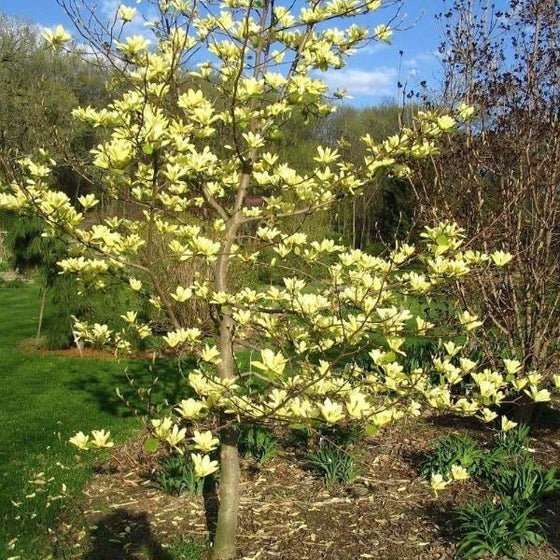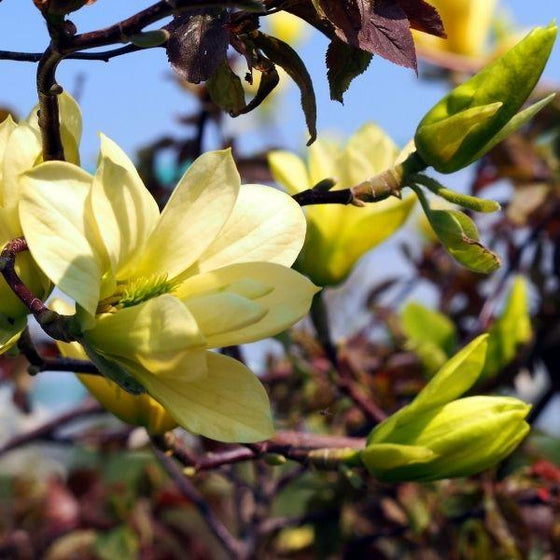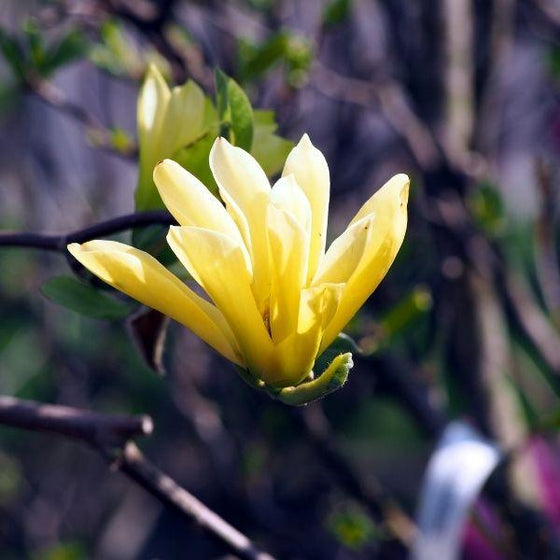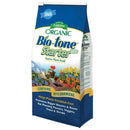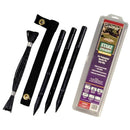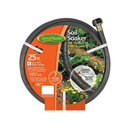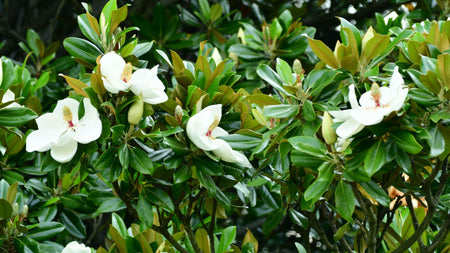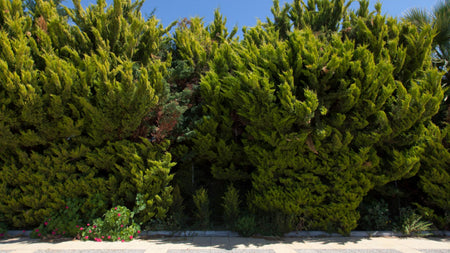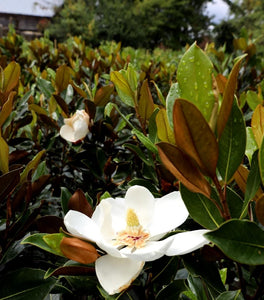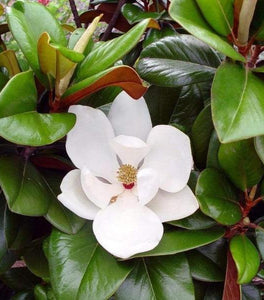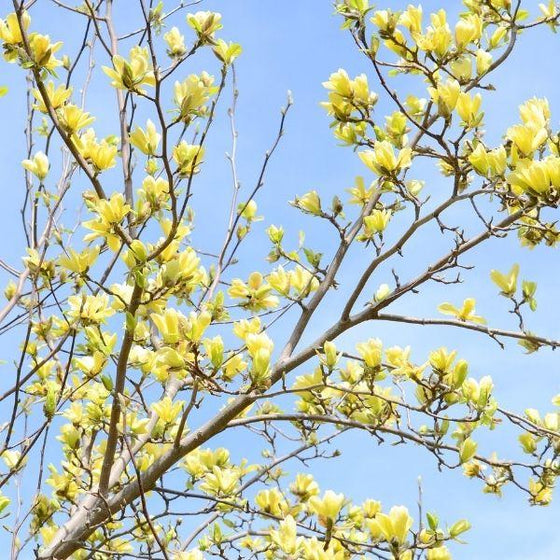
Images Depict Mature Plants
Magnolia Butterflies Trees for Sale Online
Magnolia Butterflies is one of the most sought-after magnolias. Its rare yellow flowers open before the green leaves emerge in the spring growing season and have a unique tulip shape. Magnolia Butterflies are typically grown as a mid-sized specimen tree that is sure to impress.
This small flowering tree grows in an upright pyramidal habit and grows from a single trunk. Hardy in zones 5 to 9, this yellow-flowered magnolia grows well in cool and hot climates. However, this tree doesn't thrive in extremely cold-hardy climates.
Magnolia Butterflies reach heights of 20 feet tall, and their spring flowers bloom in full sun to part shade. Add a pop of color to your lawn or garden with Butterflies Magnolia's vibrant blooms atop its bare branches. This small deciduous tree's smooth silver-gray bark provides year-round interest even during winter and is relatively easy to grow. Magnolia Butterflies is a drought-tolerant tree and doesn't have any problems with pests or diseases.
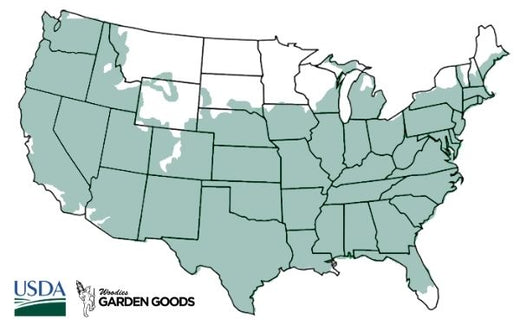
| Hardiness Zone: | 5-9 |
|---|---|
| Mature Height: | 20 to 25 Feet |
| Mature Width: | 15 to 20 Feet |
| Classification: | Broad leaved flowering tree, early spring flowering |
| Sunlight: | Full sun to part sun |
| Habit: | Upright, pyramidal shape |
| Foliage: | Green |
| Flower Color: | Yellow, fragrant flowers in late spring |
| Pruning Season: | No pruning needed |
| Soil Condition: | Any well drained soil |
| Water Requirements: | Water well until established |
| Uses: | Full sun brings out the best fall color; will adapt to drier sites |
How to Care for Magnolia Butterflies
Once you buy a Magnolia Butterflies Tree, make sure to read about the recommended care instructions to keep this plant healthy and thriving.
How do I plant a Magnolia Butterflies Tree?
We suggest when planting your newly purchased Magnolia Butterflies plants that you dig a hole twice as wide as the root system, but not deeper. The most common cause of plant death after transplanting is planting the new plant too deep. A good rule is that you should still be able to see the soil the plant was grown in after back-filling the hole.
Depending on the quality of your existing soil, you may need to add a locally sourced compost or topsoil to the back-fill soil. We do not recommend using straight topsoil or compost as a back-fill soil because more times than not these products will retain entirely too much moisture and will cause the root system to rot. Adding compost or topsoil will help the young feeder roots of Magnolia Butterflies to spread through the loose, nutrient-rich soil, much easier than if you used solely the existing soil which more times than not will be hard and compacted.
How do I water Magnolia Butterflies Trees?
After back-filling and lightly compacting the 50/50 mix of existing soil and compost, give the Magnolia Butterflies Trees a good deep watering. This is not to be rushed. Most of the water you put on the plant at first will run away from the plant until the soil is soaked. A general rule of thumb is to count to 5 for every one gallon of pot size. For example, a one gallon pot would be watered until you count to 5; a three gallon pot would be 15; and so on.
Check the plant daily for the first week or so and then every other day there after. Water using the counting method for the first few weeks. Gator Bags are a good investment that will help minimize the watering chore. Gator bag Jr. can be used to help aid in this process and also provide plants with a good soaking due to the slow release of the water into the root-zone of the plant. Soaker Hoses can also be used to water when planting a long hedge.
How do I fertilize my Butterfly Magnolia Trees?
Magnolia Butterflies Trees grow best if they are fertilized lightly in the spring once frost has passed with a well-balanced, extended-release, fertilizer such as Espoma Tree-tone. Fertilize Butterfly Magnolia Trees again 6 to 8 weeks later to encourage denser foliage or faster growth of young trees. We recommend Bio-Tone fertilizer when planting. Either chemical fertilizers or organic matter can be used successfully with Butterfly Magnolia.
Since an organic method of applying manure and/or compost around the roots produces excellent results and also improves the condition of the soil, this would be an excellent first line of attack. Organic additions to the soil can also be combined with a shot of chemical fertilizer for maximum effect.
How do I mulch Magnolia Butterflies Trees?
We highly recommend that you mulch your Magnolia Butterflies Trees with either a ground hardwood mulch or a ground cypress mulch depending on your local availability. Any type of mulch will do, but cypress or hardwood mulch will be of a higher quality and provide better nutrition overall as they break down.
Mulching helps to keep weeds away which will compete with your new investment for water and nutrients. A 2 to 3 inch layer of mulch is sufficient, but do not cover any part of the stem of the plant with mulch. It's better to leave a one inch gap of space between the mulch and the stem or trunk of the plant.

